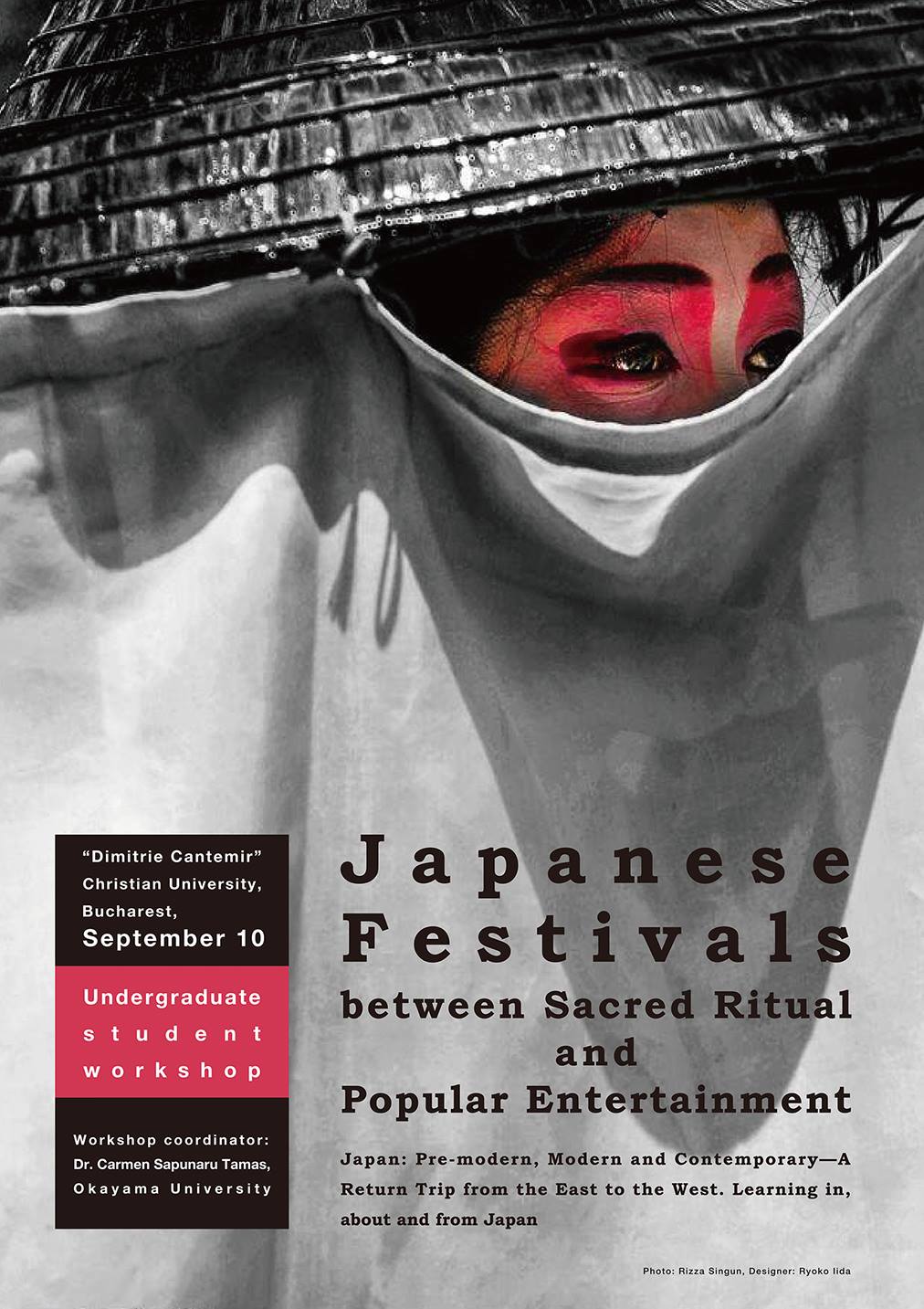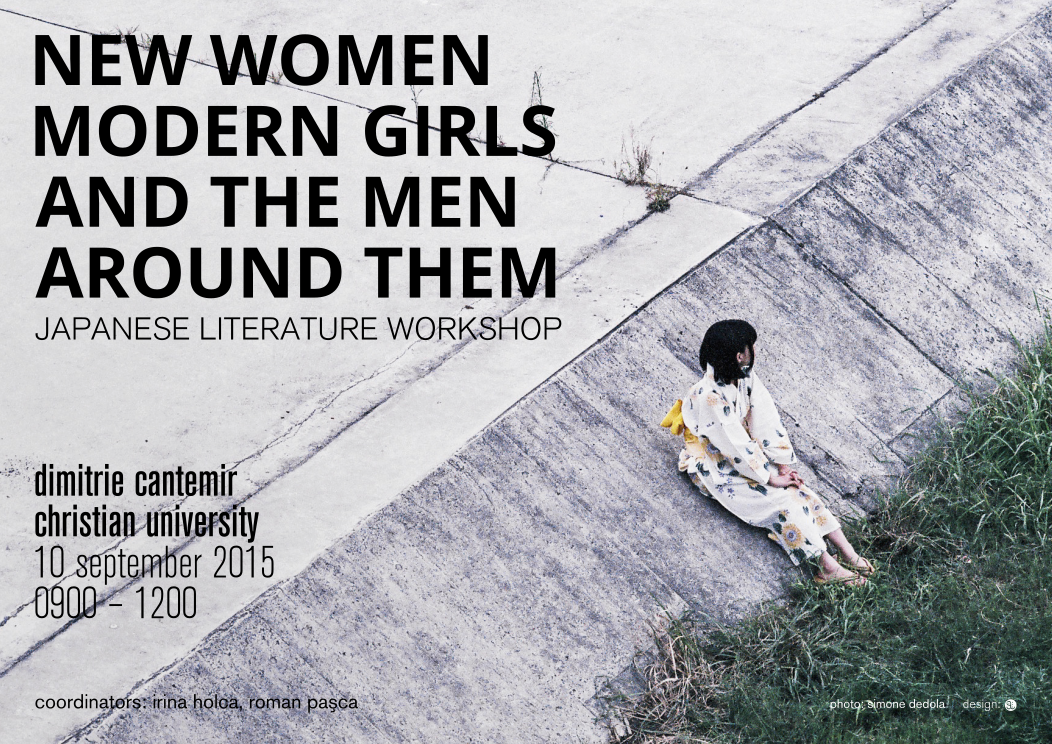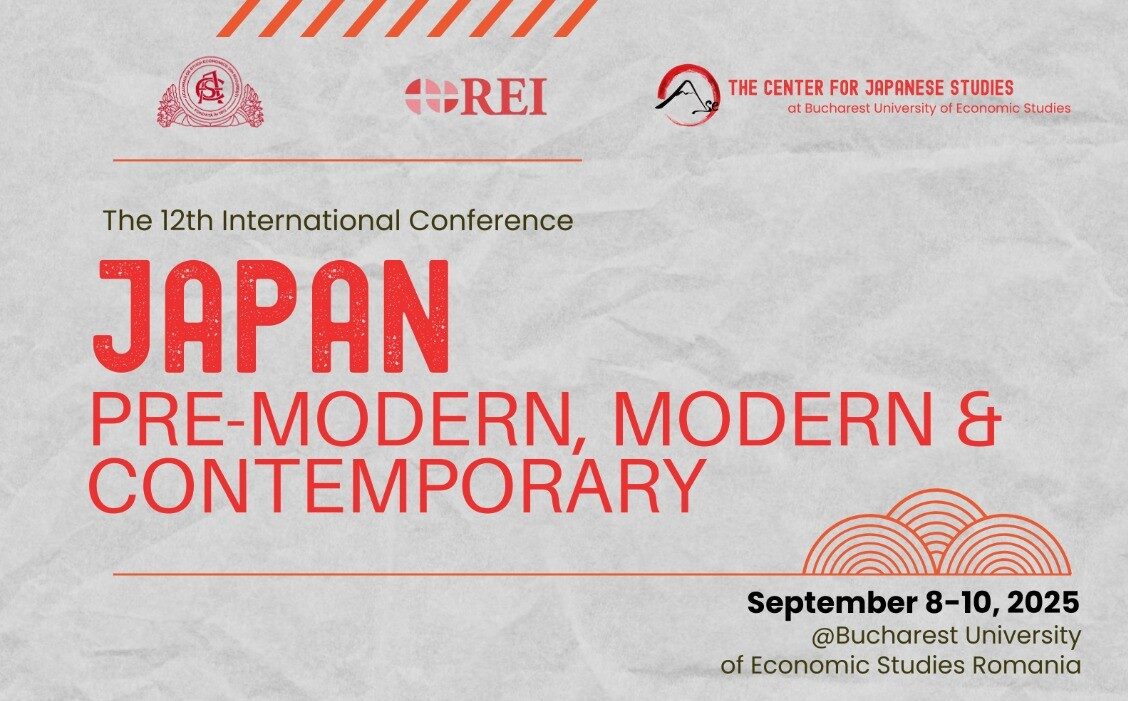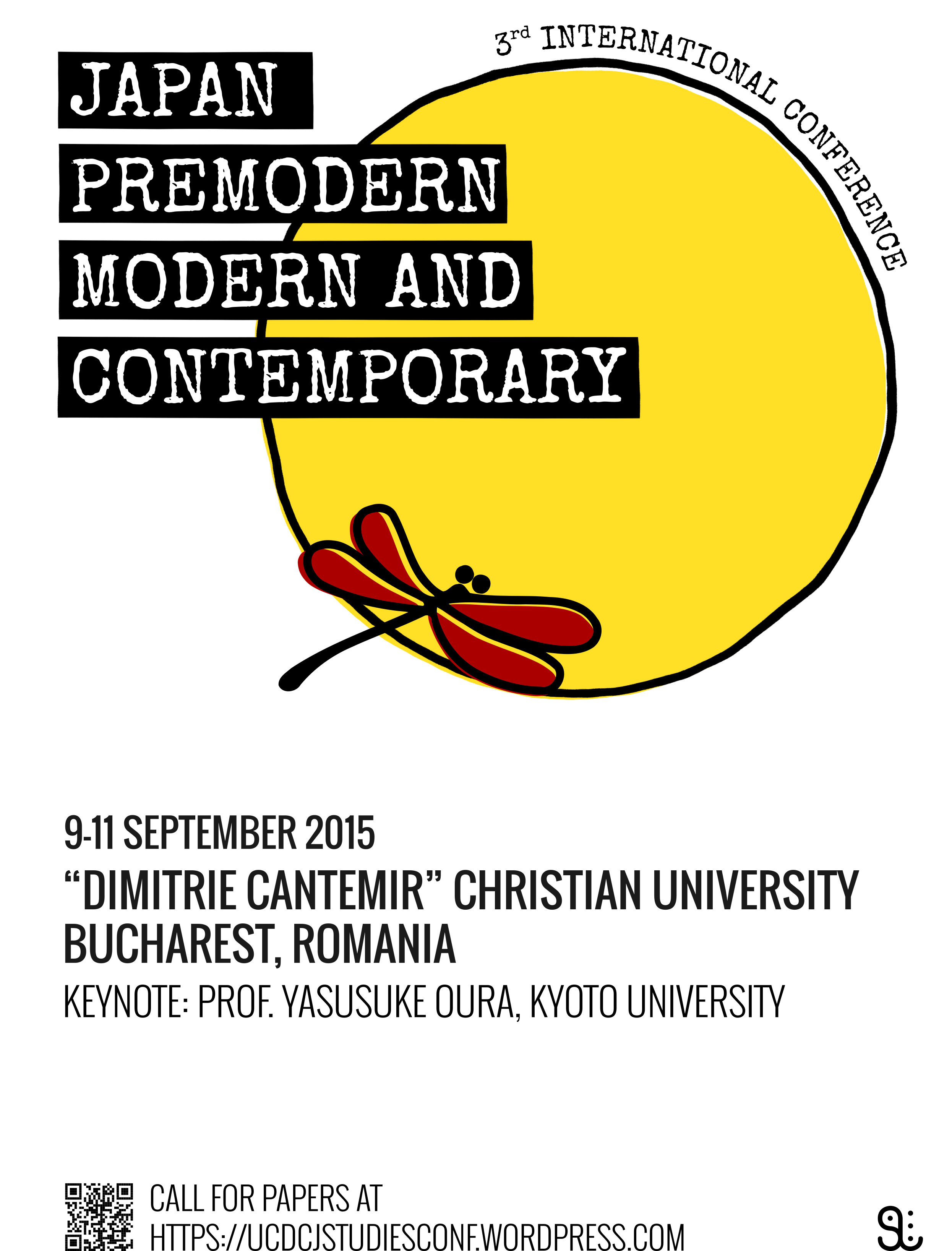Below you can find some information about the third edition of the conference (September 9-11, 2015): the program, the abstracts of the papers presented, and the outline of the two workshops. We had numerous sessions about culture, literature and linguistics, and 40 participants from 6 countries.
Program:
Abstracts:
***
Workshops:
“Japanese Festivals between Sacred Ritual and Popular Entertainment”
 On the second day of the conference (September 10, from 9:00 to 12:00), Dr. Carmen Săpunaru Tămaș, Associate Professor at Okayama University, held a workshop on topics related to Japanese anthropology and ethnology entitled “Japanese Festivals between Sacred Ritual and Popular Entertainment.” The workshop was intended for undergraduate students, but graduate students were also welcome.
On the second day of the conference (September 10, from 9:00 to 12:00), Dr. Carmen Săpunaru Tămaș, Associate Professor at Okayama University, held a workshop on topics related to Japanese anthropology and ethnology entitled “Japanese Festivals between Sacred Ritual and Popular Entertainment.” The workshop was intended for undergraduate students, but graduate students were also welcome.
Workshop structure Part I: A short introduction to Japanese matsuri and their basic characteristics. Discussion of the fundamental concepts pertaining to both the religious and social aspects of a matsuri. Case studies (+videos). Part II: Poster presentation. Students chose a festival and analyzed it using the theoretical tools introduced in the first part of the workshop. All participants received a completion certificate.
Literature Workshop: New Women, Modern Girls, and the Men Around Them: A Picture of Japanese Society and Literature
 Dr. Roman Pașca (Lecturer, Kanda University of International Studies) and Dr. Irina Holca (Lecturer, Institute for Research in Humanities, Kyoto University) organized a joint workshop on modern Japanese literature, in the morning of the second day of the conference (September 10, from 9:00 to 12:00). The workshop was intended for undergraduate students, but graduate students were also welcome.
Dr. Roman Pașca (Lecturer, Kanda University of International Studies) and Dr. Irina Holca (Lecturer, Institute for Research in Humanities, Kyoto University) organized a joint workshop on modern Japanese literature, in the morning of the second day of the conference (September 10, from 9:00 to 12:00). The workshop was intended for undergraduate students, but graduate students were also welcome.
Workshop structure Part I: The instructors provided the historical/ cultural/ social background information, as well as the necessary tools and concepts (literary theories and approaches) for a student-centered discussion focused on two famous Japanese novels, Tayama Katai’s The Quilt and Tanizaki Jun’ichirō’s Naomi. Part II: The students either analysed a new text (suggested by the instructors, or of their own choice) with the theoretical tools/ against the historical background studied during the workshop, or analysed Tayama Katai’s The Quilt and Tanizaki Jun’ichirō’s Naomi from a different angle/ using a different approach than those used during the workshop. The results of their work were exhibited as poster presentations on September 11.

